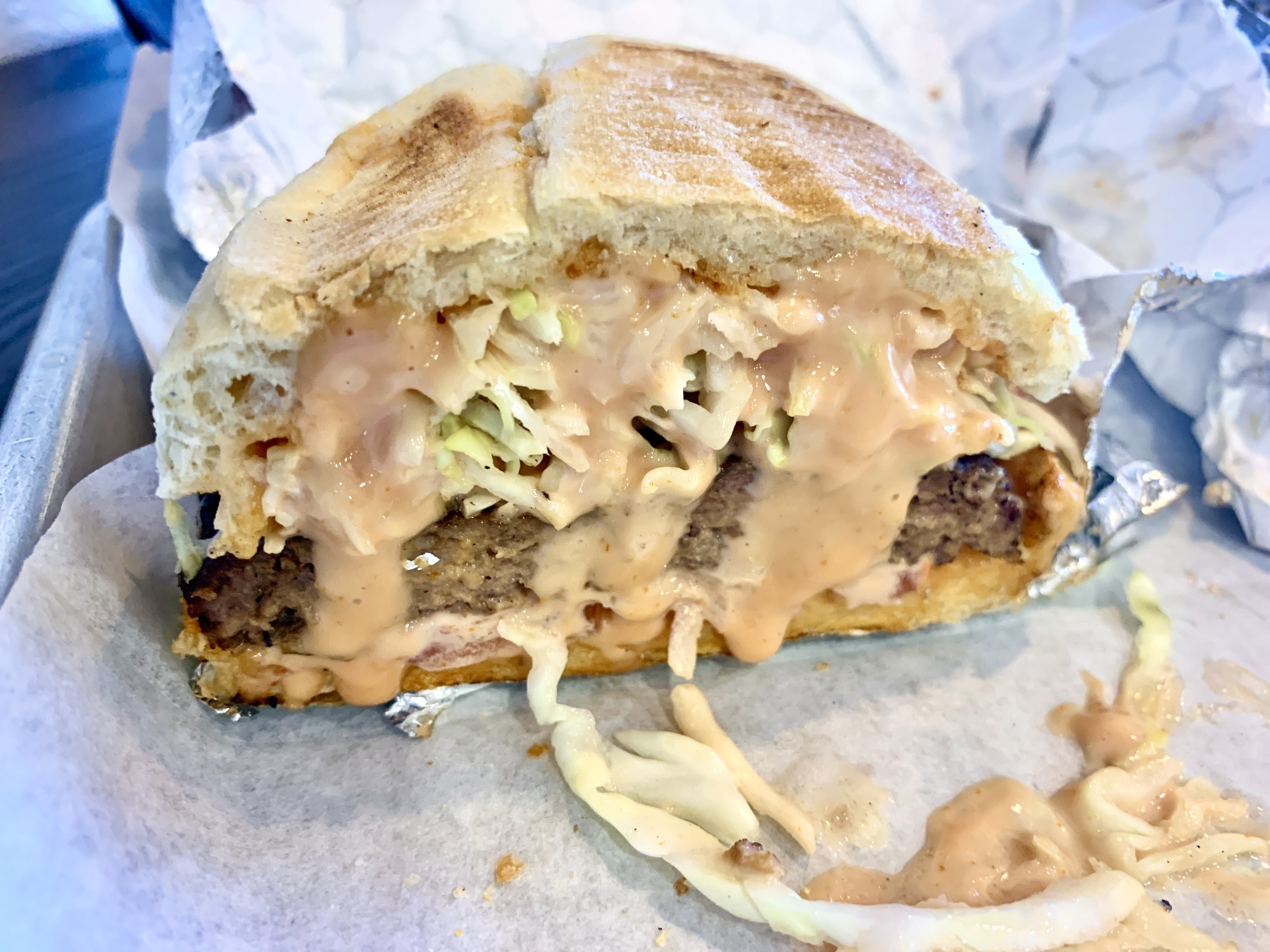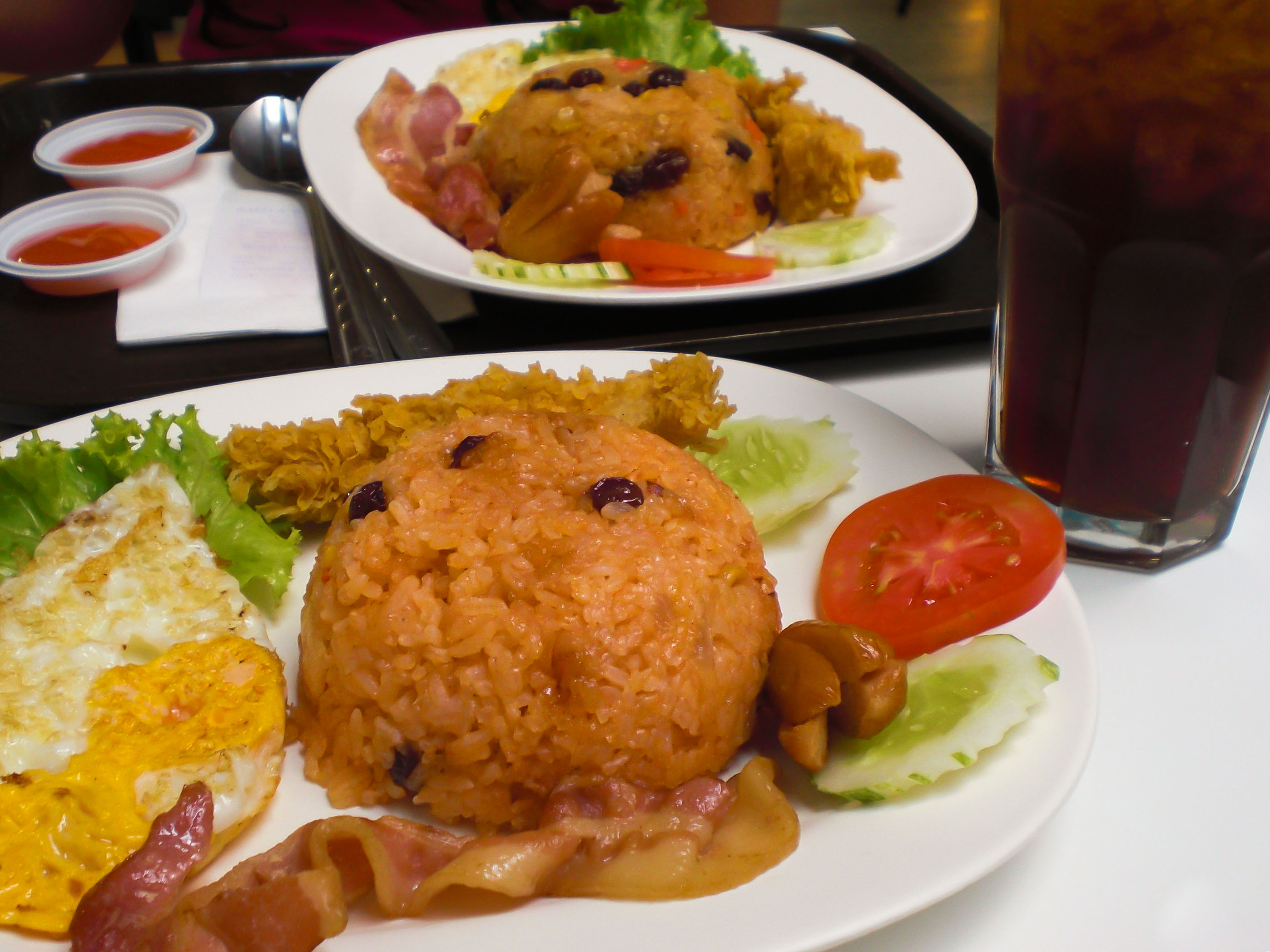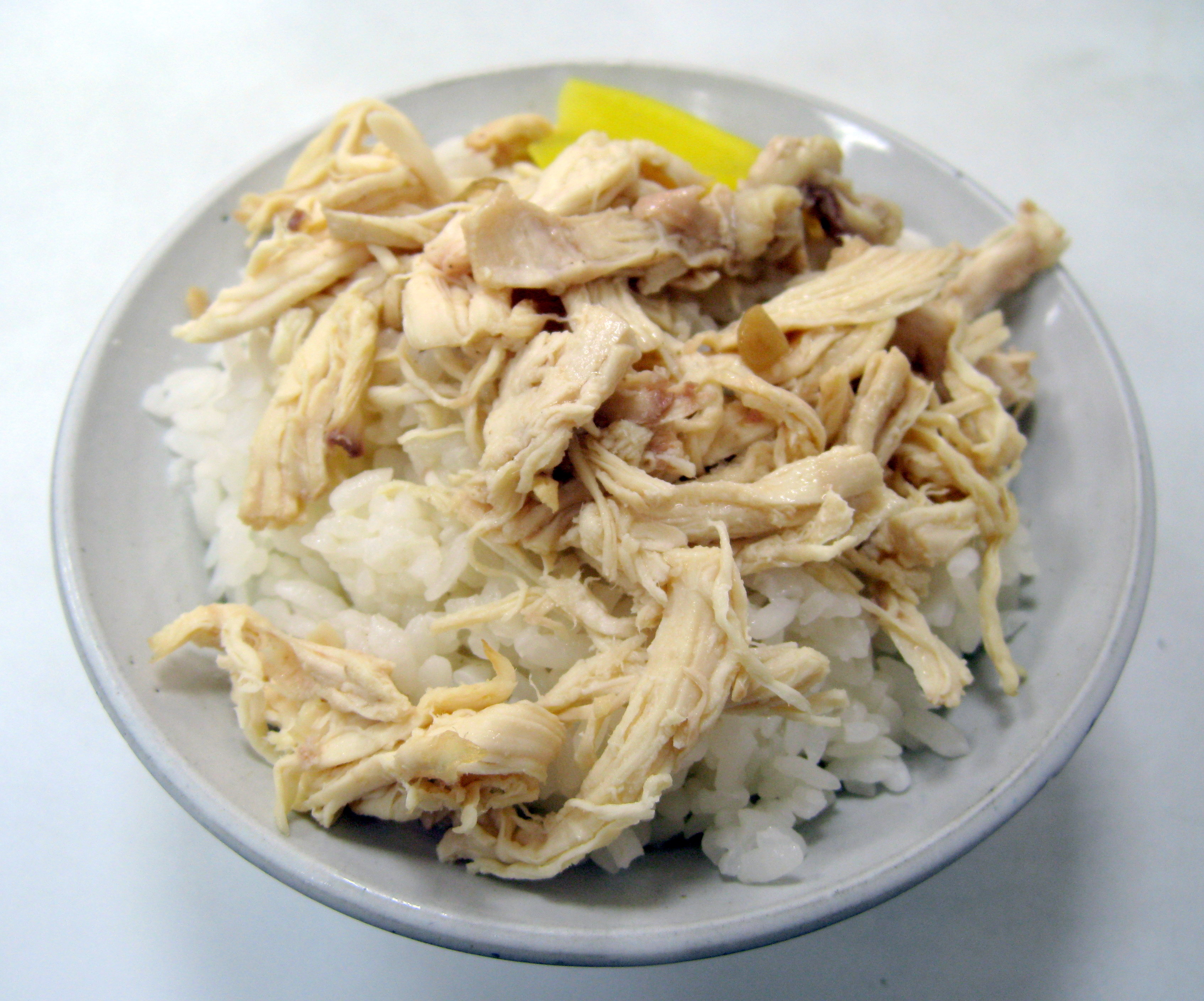|
Arroz Con Pollo
''Arroz con pollo'' ( Spanish for ''rice with chicken'') is a traditional dish of Latin America. It typically consists of chicken cooked with rice, onions, saffron, and a potential plethora of other grains or vegetables. In the Dominican Republic it is alternately called locrio de pollo, and in Saint Martin it is called lokri or locreo. Origins There is some debate as to whether it originated in Spain or Puerto Rico. Many Puerto Ricans note that arroz con pollo cannot be made without beer and annatto oil, and saffron is no substitute. Beer and annatto are rarely used in Spanish cooking and never in arroz con pollo there. Annatto is frequently used in Puerto Rican cooking especially in rice dishes like arroz con gandules (rice with pork and pigeon peas) and arroz con maiz (rice with corn and sausage). Beer is used in many Puerto Rican dishes like pollo guisado (braised stewed chicken) and asopao de pollo (chicken rice stew). Many Puerto Rican rice dishes are generously se ... [...More Info...] [...Related Items...] OR: [Wikipedia] [Google] [Baidu] |
Iberian Peninsula
The Iberian Peninsula ( ), also known as Iberia, is a peninsula in south-western Europe. Mostly separated from the rest of the European landmass by the Pyrenees, it includes the territories of peninsular Spain and Continental Portugal, comprising most of the region, as well as the tiny adjuncts of Andorra, Gibraltar, and, pursuant to the traditional definition of the Pyrenees as the peninsula's northeastern boundary, a small part of France. With an area of approximately , and a population of roughly 53 million, it is the second-largest European peninsula by area, after the Scandinavian Peninsula. Etymology The Iberian Peninsula has always been associated with the River Ebro (Ibēros in ancient Greek and Ibērus or Hibērus in Latin). The association was so well known it was hardly necessary to state; for example, Ibēria was the country "this side of the Ibērus" in Strabo. Pliny the Elder, Pliny goes so far as to assert that the Greeks had called "the whole of the peninsula" Hi ... [...More Info...] [...Related Items...] OR: [Wikipedia] [Google] [Baidu] |
Phoenicia
Phoenicians were an Ancient Semitic-speaking peoples, ancient Semitic group of people who lived in the Phoenician city-states along a coastal strip in the Levant region of the eastern Mediterranean, primarily modern Lebanon and the Syria, Syrian coast. They developed a Maritime history, maritime civilization which expanded and contracted throughout history, with the core of their culture stretching from Arwad in modern Syria to Mount Carmel. The Phoenicians extended their cultural influence through trade and colonization throughout the Mediterranean, from Cyprus to the Iberian Peninsula, evidenced by thousands of Canaanite and Aramaic inscriptions, Phoenician inscriptions. The Phoenicians directly succeeded the Bronze Age Canaanites, continuing their cultural traditions after the decline of most major Mediterranean basin cultures in the Late Bronze Age collapse and into the Iron Age without interruption. They called themselves Canaanites and referred to their land as Canaan, but ... [...More Info...] [...Related Items...] OR: [Wikipedia] [Google] [Baidu] |
Latin American Cuisine
Latin American cuisine is the typical foods, beverages, and cooking styles common to many of the countries and cultures in Latin America. Latin America is a highly racially, ethnically, and geographically diverse with varying cuisines. Some items typical of Latin American cuisine include maize-based dishes arepas, empanadas, pupusas, tacos, tamales, tortillas and various salsas and other condiments ( guacamole, pico de gallo, mole, chimichurri, chili, aji, pebre). Sofrito, a culinary term that originally referred to a specific combination of sautéed or braised aromatics, exists in Latin American cuisine. It refers to a sauce of tomatoes, roasted bell peppers, garlic, onions and herbs. Rice, corn, pasta, bread, plantain, potato, yucca, and beans are also staples in Latin American cuisine. Latin American beverages are just as distinct as their foods. Some of the beverages predate colonization. Some popular beverages include coffee, mate, guayusa, hibiscus tea, horc ... [...More Info...] [...Related Items...] OR: [Wikipedia] [Google] [Baidu] |
Dominican Republic Cuisine
Dominican cuisine is made up of Spanish cuisine, Spanish, Indigenous Taíno, Middle Eastern cuisine, Middle Eastern, and Cuisine of Africa, African influences. The most recent influences in Dominican cuisine are from the British West Indies and China. Dishes and their origins The Taíno cultivated many types of tubers such as cassava, yuca, Xanthosoma sagittifolium, yautia, and sweet potato, batata. An important staple of Dominican cuisine adopted from the Taino people is casabe, made from cassava root and was important to the diet of the Taino. Casabe is served with soups and stews in the Dominican Republic. Spices such as vanilla, nutmeg, and pepper most often used by Dominican cooks derive from Spanish cuisine. The Dominican Republic was formerly a Spanish colonization of the Americas, Spanish colony. Many Spanish traits are still present in the island. Many traditional Spanish dishes have found a new home in the Dominican Republic, some with a twist. African and Taíno d ... [...More Info...] [...Related Items...] OR: [Wikipedia] [Google] [Baidu] |
Cuban Cuisine
Cuban cuisine is largely based on Spanish cuisine with influence from India, African and other Caribbean cuisines. Some Cuban recipes share spices and techniques with Spanish, Taino and African cooking, with some Caribbean influence in spice and flavor. This results in a blend of several different cultural influences. A small but noteworthy Chinese influence can also be accounted for, mainly in the Havana area. There is also some Italian influence. During colonial times, Cuba was an important port for trade, and the Spanish ancestors of Cubans brought with them the culinary traditions of different parts of Spain.Rodriguez, H. ''Cuban Food Profile: Cuban Food History'' Overview As a result of the colonization of Cuba by Spain, one of the main influences on the cuisine is from Spain. Other culinary influences include the Taíno, the indigenous people of Cuba, Africa, from the Africans who were brought to Cuba as Slavery, slaves, and French, from the French colonists who came to Cub ... [...More Info...] [...Related Items...] OR: [Wikipedia] [Google] [Baidu] |
Mandi (food)
Mandi () is an Arab traditional dish that originated from the Hadhramaut region in Yemen. It consists mainly of meat and rice with a blend of spices, and is cooked in a Earth oven, pit. It is consumed in most areas of the Arabian Peninsula and also found in Egypt, Hyderabad State, Hyderabad Deccan (where many people of Yemeni descent live), the Levant, Turkey, Kerala and Southeast Asia. Etymology The word "mandi" comes from the Arabic word "''nada"'', meaning "dew", and reflects the moist 'dewy' texture of the meat. Technique Mandi was usually made from rice, meat (lamb and mutton, lamb, Camel meat, camel, Goat meat, goat or Chicken (food), chicken), and a mixture of spices called hawaij. The main technique that differentiates mandi from other meat dishes is that the meat is cooked in the Clay oven, tannour. Dry wood (traditionally Vachellia tortilis, samer or Haloxylon ammodendron, gadha) is placed in the tandoor and burned to generate heat turning the wood into char ... [...More Info...] [...Related Items...] OR: [Wikipedia] [Google] [Baidu] |
List Of Rice Dishes
This is a list of rice dishes from all over the world, arranged alphabetically. Rice is the seed of the monocot plants ''Oryza sativa'' (Asian rice) or ''Oryza glaberrima'' (African rice). As a cereal, cereal grain, it is the most widely consumed staple food for a large part of the world's human population, especially in Asia and the West Indies. It is the grain with the second-highest worldwide production, after maize (corn), according to data for 2010. List by country Unsorted * Aiwowo * Bagoong fried rice * Buttered rice * Insalata di riso * Kanika (food), Kanika * KFC rice * Lentil rice * Mutabbaq samak * Sayadieh See also * Arabic rice – a pilaf preparation using rice and vermicelli noodles * List of fried rice dishes * List of rice beverages * List of rice varieties * List of tortilla-based dishes * Pakistani rice dishes References {{Lists of prepared foods Rice dishes, * Lists of foods by type, Rice dishes Korean cuisine-related lists, Rice dishes World cuisin ... [...More Info...] [...Related Items...] OR: [Wikipedia] [Google] [Baidu] |
List Of Chicken Dishes
This is a list of chicken dishes. Chicken The chicken (''Gallus gallus domesticus'') is a domesticated subspecies of the red junglefowl (''Gallus gallus''), originally native to Southeast Asia. It was first domesticated around 8,000 years ago and is now one of the most common and w ... is the most common type of poultry/meat in the world, and was one of the first domesticated animals. Chicken is a major worldwide source of meat and egg (food), eggs for human consumption. It is prepared as food in a wide variety of ways, varying by region and culture. The prevalence of chickens is due to almost the entire chicken being edible, and the ease of raising them. The chicken domesticated for its meat are broilers and for its eggs are Poultry farming#Egg-laying chickens, layers. Chicken as a meat has been depicted in Babylonian carvings from around 600 BC. Chicken was one of the most common meats available in the Medieval cuisine, Middle Ages. It was eaten over most of the Eastern ... [...More Info...] [...Related Items...] OR: [Wikipedia] [Google] [Baidu] |
Jollof Rice
Jollof (), or jollof rice, is a rice dish from West Africa. The dish is typically made with long-grain rice, tomatoes, chilis, onions, spices, and sometimes other vegetables and/or meat in a single pot, although its ingredients and preparation methods vary across different regions. The dish originated in Senegal. Regional variations are a source of competition among the countries of West Africa, and in particular between Nigeria and Ghana, over whose version is the best; in the 2010s this developed into a friendly rivalry known as the "Jollof Wars". In French-speaking West Africa, a variation of the dish is known as riz au gras. The Senegalese version, thieboudienne, has been recognized by UNESCO as an intangible cultural heritage dish. History and origin The Jolof or Wolof Empire was a confederacy state that ruled parts of West Africa situated in modern-day Senegal, Mali, The Gambia and Mauritania from around the 12th century and was later known as the Jolof Kingdom. Acco ... [...More Info...] [...Related Items...] OR: [Wikipedia] [Google] [Baidu] |
Chicken And Rice (other)
Chicken and rice is a common food combination in several cultures which have both chicken and rice as staple foods. Examples include: *''Arroz con pollo'', a Latin American dish *''Chikin raisu'' (chicken rice, rice pan-fried with ketchup and chicken) ( ja), an ingredient in Japanese omurice * Claypot chicken rice, a clay pot dish popular in China, Malaysia, and Singapore *Hainanese chicken rice, a Singaporean dish created by Hainanese immigrants * KFC rice, a Japanese dish of rice steamed with fried chicken in a rice cooker A rice cooker or rice steamer is an automated kitchen appliance designed to boil or steam rice. It consists of a heat source, a cooking bowl, and a thermostat. The thermostat measures the temperature of the cooking bowl and controls the heat. C ... * The Chicken Rice Shop, a Malaysian restaurant chain specializing in Hainanese chicken rice {{SIA * ... [...More Info...] [...Related Items...] OR: [Wikipedia] [Google] [Baidu] |
Cabidela
''Cabidela'' () or ''arroz de cabidela'' (''cabidela'' rice) is a Portuguese dish made with poultry, usually a Rooster (chicken). It is typical of the northern Minho region. The particularity of the dish is that the hen's blood is added almost at the end, mixed with vinegar (so it doesn't clot) while the rice is boiling, much like "jugged" or "civet" dishes. The blood is captured when the animal is slaughtered and imparts a brown color to the dish. Occasionally, white rice can be served with the dish, although this is not common. Cooking with blood is an antique custom common to several ancient cultures; in Portugal, Cabidela has been found in written record since the 16th century and may equally be prepared with other fowl or animals (duck, turkey, pork, kid or game), though these are rare. Variants Variations on the dish is also popular in many of Portugal's former colonies, such as Macau, where a similar dish made with duck (''pato de cabidela'' or ''pato à cabidela'') is on ... [...More Info...] [...Related Items...] OR: [Wikipedia] [Google] [Baidu] |
Biryani
Biryani () is a mixed rice dish originating in South Asia, made with rice, meat (chicken, goat, lamb, beef) or seafood (prawns or fish), and spices. To cater to vegetarians, the meat or seafood can be substituted with vegetables or paneer. Sometimes eggs or potatoes are also added. Biryani is one of the most popular dishes in South Asia and the South Asian diaspora. Similar dishes are also prepared in many other countries like Iraq and Malaysia, and was often spread to such places by South Asian diaspora populations. ''Biryani'' is the single most-ordered dish on Indian online food ordering and delivery services, and has been labelled as the most popular dish overall in India. Etymology Some theories suggest that the it originated from the ''vrīhí'' (), meaning rice. Other theories suggest originated from ''birinj'' (), the Persian word for rice. Another theory states that it was derived from ''biryan'' or ''beriyan'' (), which means "to fry" or "to roast". It may ... [...More Info...] [...Related Items...] OR: [Wikipedia] [Google] [Baidu] |







